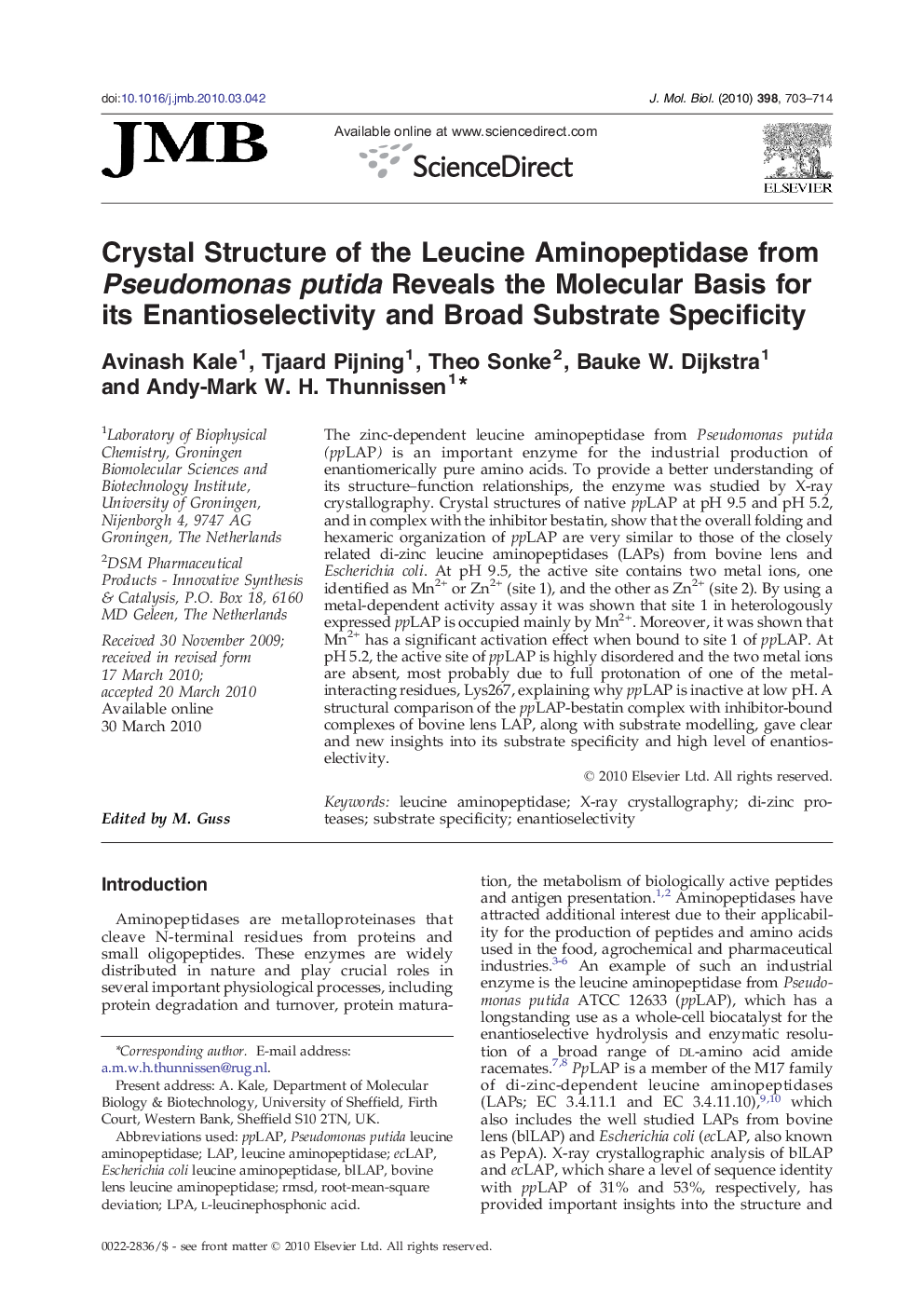| کد مقاله | کد نشریه | سال انتشار | مقاله انگلیسی | نسخه تمام متن |
|---|---|---|---|---|
| 2185770 | 1096008 | 2010 | 12 صفحه PDF | دانلود رایگان |

The zinc-dependent leucine aminopeptidase from Pseudomonas putida (ppLAP) is an important enzyme for the industrial production of enantiomerically pure amino acids. To provide a better understanding of its structure–function relationships, the enzyme was studied by X-ray crystallography. Crystal structures of native ppLAP at pH 9.5 and pH 5.2, and in complex with the inhibitor bestatin, show that the overall folding and hexameric organization of ppLAP are very similar to those of the closely related di-zinc leucine aminopeptidases (LAPs) from bovine lens and Escherichia coli. At pH 9.5, the active site contains two metal ions, one identified as Mn2+ or Zn2+ (site 1), and the other as Zn2+ (site 2). By using a metal-dependent activity assay it was shown that site 1 in heterologously expressed ppLAP is occupied mainly by Mn2+. Moreover, it was shown that Mn2+ has a significant activation effect when bound to site 1 of ppLAP. At pH 5.2, the active site of ppLAP is highly disordered and the two metal ions are absent, most probably due to full protonation of one of the metal-interacting residues, Lys267, explaining why ppLAP is inactive at low pH. A structural comparison of the ppLAP-bestatin complex with inhibitor-bound complexes of bovine lens LAP, along with substrate modelling, gave clear and new insights into its substrate specificity and high level of enantioselectivity.
Journal: Journal of Molecular Biology - Volume 398, Issue 5, 21 May 2010, Pages 703–714